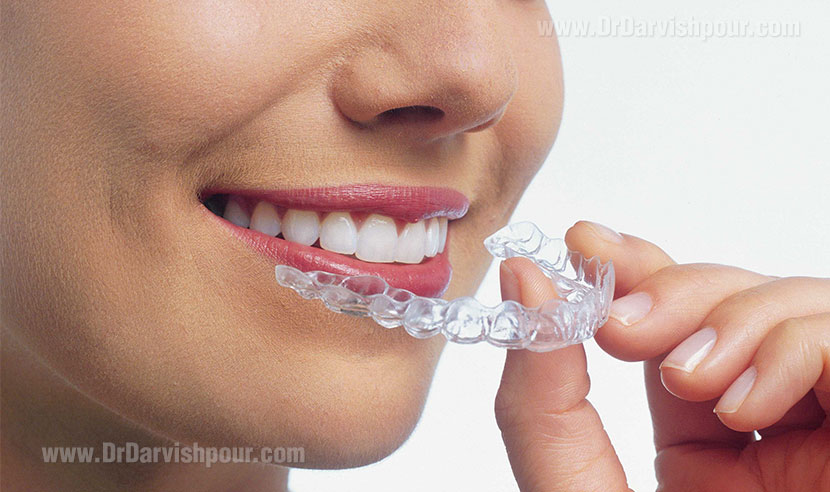What Is Orthodontics
Orthodontics is a way to improve the appearance and function of the teeth.
Orthodontics literally means “straight teeth”.
If the teeth are overlapped or misaligned for any reason (small jaw or crooked teeth), chewing or biting is going to be hard. Also, maintaining the oral hygiene would be a difficult task with overlapped teeth.
The teeth that are misaligned or have gaps in between have their own problems in terms of aesthetics and functionality.
Main duties of teeth
The main duty of teeth is to chew and bite food so it mixes better and faster with saliva.
The other duty is to pronounce words correctly. Teeth also have an important role on the facial and smile aesthetics. Healthy and beautiful teeth result in self-confidence and mental health.
Main duties of orthodontics
Orthodontics can straighten and reposition the teeth in cases in which the jaw is small or the teeth overlap or there are gaps between the teeth because of a big jaw
Treating jaw abnormalities by orthodontics
The retrusion of the lower jaw in which the upper jaw has grown more than usual, referred to as the class II jaw malocclusion. This affects the functionality of the teeth other than just making one’s appearance look bad.
The protrusion of the lower jaw in which the lower teeth protrude too far in front of the upper teeth.
One of the main duties of orthodontics is to straighten and realign the long and short teeth.
By employing various methods of orthodontics, teeth will be placed correctly inside the mouth. The functionality, the appearance of the teeth and the beauty of the smile will all be improved.
Orthodontics to fix diastema (gaps between teeth)
A teeth gap which naturally has enough space for a dental floss to go through is aesthetically acceptable.
However, in some people, this gap is more than 1 millimeter and sometimes it reaches up to 10 millimeters.
What is the cause of diastema?
In most observations, the cause of diastema is reported to be genetics.
For instance, a person inherits the gene for small teeth from one of the parents and the gene for a big jaw from the other one. Definitely, in this person, there is a lot of space available for the teeth and there will be an abnormal gap in between them.
Among other reasons that cause diastema are diseases related to the tissues holding the teeth and the lack of some of the back teeth.
Your orthodontist will take the necessary measures to prevent the progress of the gum diseases and will treat them before closing the gaps between the teeth.
Bad habits, like using toothpick instead of dental floss or playing with the gaps between the teeth with the nails, cause the gaps open up more than usual.
How can diastema be fixed?
The orthodontists suggest several treatments which some of the approved and widely used ones are mentioned in this article.
Pulling the teeth together with orthodontics
The first solution, which is also the most popular one among patients, is orthodontics or pulling the teeth together by moving them.
The advantages of this technique are that the teeth won’t be pared down, no tissue will be cut out and the result is completely predictable. Despite the long length of treatment, in the end the patient is satisfied.
Dental composite fillings
If the patient doesn’t agree to orthodontics, the empty space between the teeth can be filled by paring down from the side of one tooth and adding to the tooth next to it.
This method can be used in cases that the gap between two teeth is not too much.
China laminate
The laboratory methods can be helpful to close gaps between the teeth.
In this way, one surface of the tooth is pared down in the office. Then a mold of the pared tooth is prepared and given to the laboratory. Finally, a china crown will be made with the same color as the adjacent teeth.
This method is considered appropriate for patients who have unequal gaps between their teeth.
Composite veneers or porcelain laminates are among other methods. They are used as a finish for the teeth after the orthodontics.
In severe cases, bridges and implants can be used to fill a big gap between the teeth.
Is there an age limit for orthodontics?
If you have a good jaw foundation and a small gap between the teeth, it can be said without exaggeration that orthodontics has no age limit.
Nowadays, tooth colored braces and ceramic clips are in the market, so that patients won’t have any problems in terms of appearance.
Dental bonding to close a tooth gap
This is an easy, fast and cheap method.
In this technique, after the teeth are cleaned with special pastes, a tooth-colored resin is used to be added to the parts in need.
Then the dentist will shape them and with the use of an ultra-violet light, the resin hardens and sticks to the teeth. In this method, the teeth won’t be pared down.
Dental crowning
Another method to close the gaps between the teeth is dental crowning.
This method is used in cases that the teeth are severely damaged or already have dental crowns.
Resolving problems related to oral hygiene before orthodontics
In order to make orthodontics an easier process, orthodontists prefer to resolve all dental problems before applying braces to the teeth.

